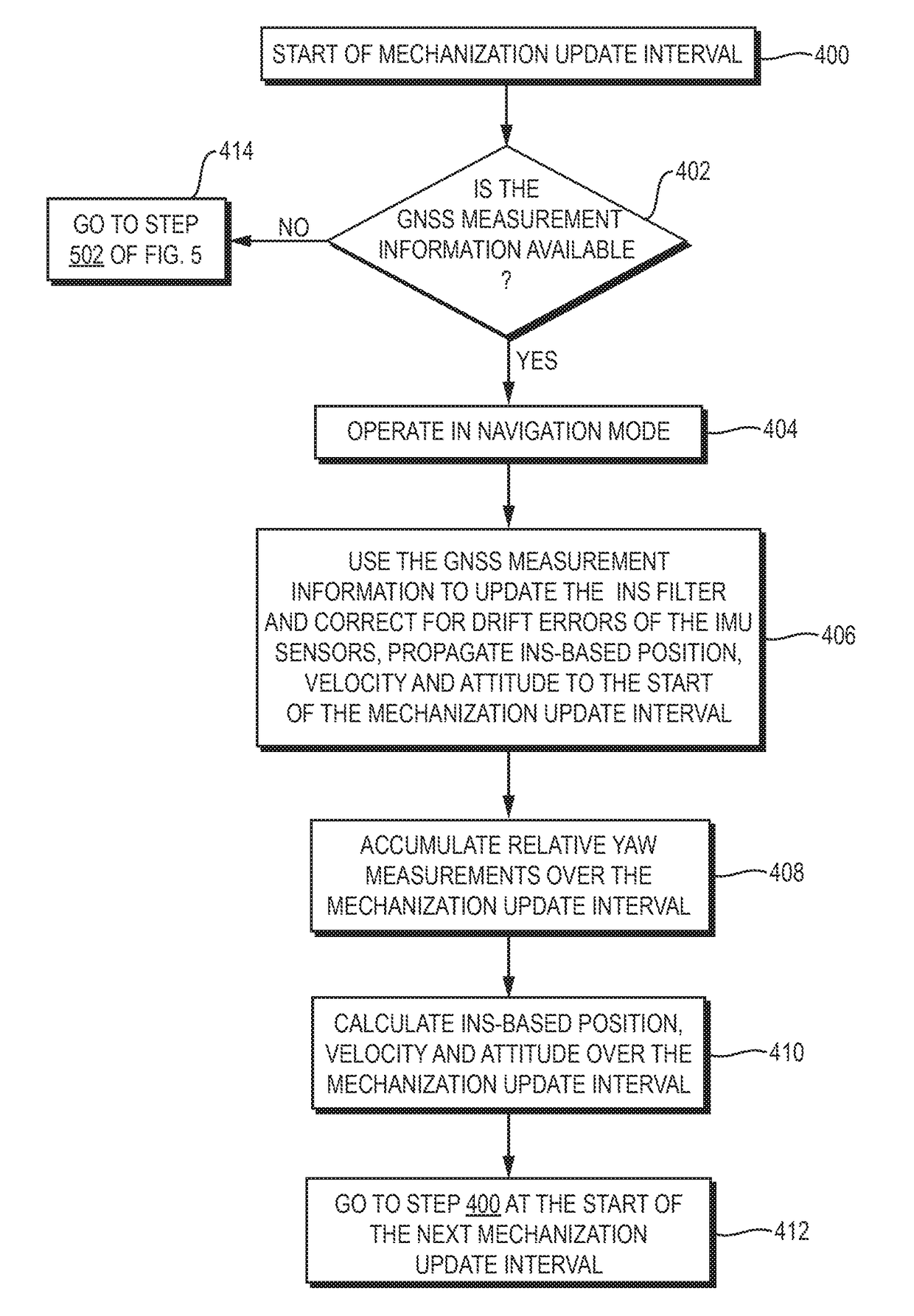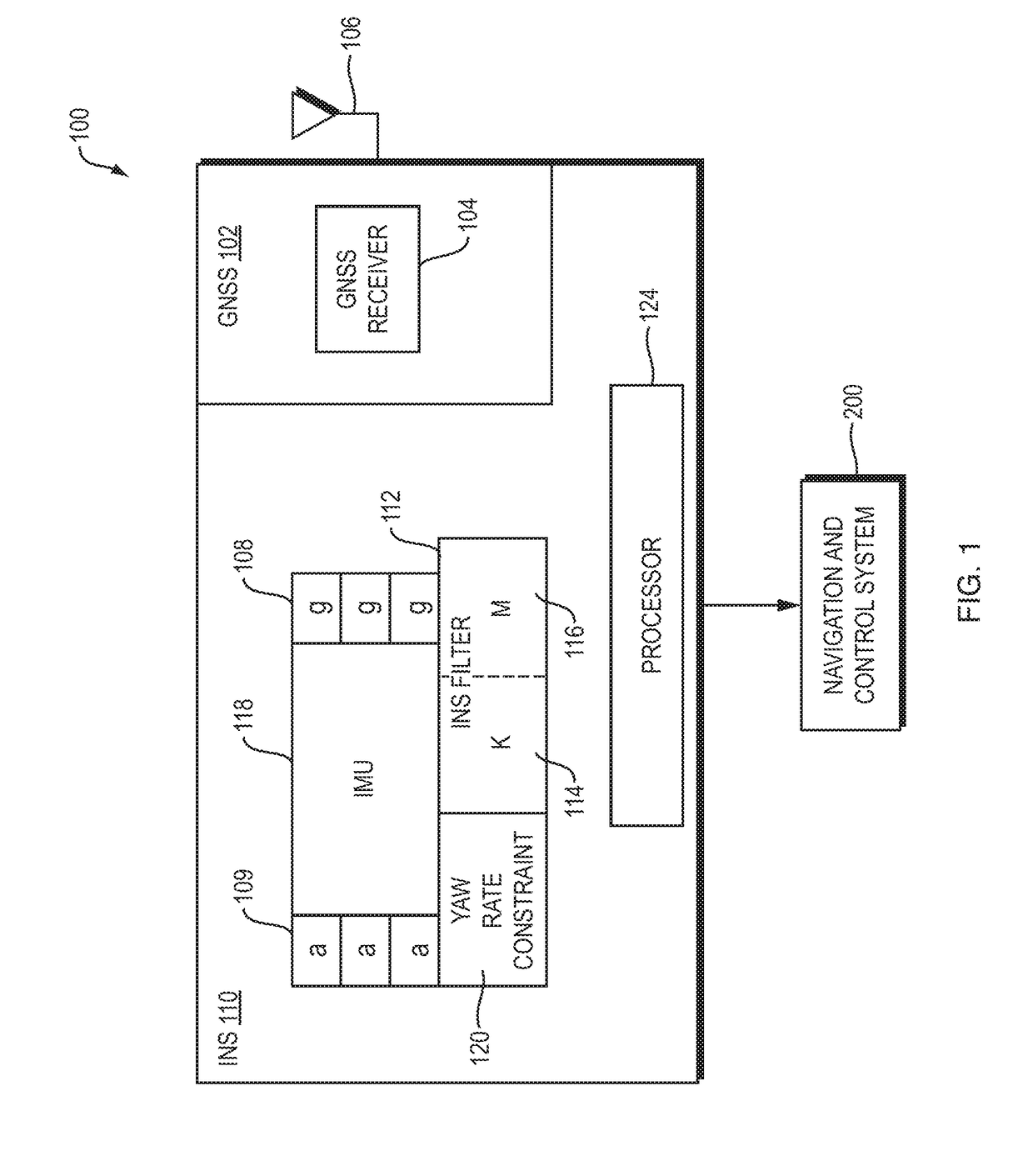Navigation system utilizing yaw rate constraint during inertial dead reckoning
a navigation system and inertial dead reckoning technology, applied in surveying navigation, navigation instruments, instruments, etc., can solve the problems of inability to accurately determine the direction of the vehicle, the accuracy of the ins-based position, the adverse influence of velocity and attitude, and the relative low cost of imu
- Summary
- Abstract
- Description
- Claims
- Application Information
AI Technical Summary
Benefits of technology
Problems solved by technology
Method used
Image
Examples
Embodiment Construction
[0015]Referring now to FIG. 1, a GNSS / INS navigation system 100 for use with a driver controlled or driverless / autonomous vehicle (not shown) includes a GNSS subsystem 102 and an INS subsystem 110. The GNSS subsystem 102 includes a GNSS receiver 104 that operates in a known manner to process GNSS satellite signals that are received by a GNSS antenna 106 and produce GNSS raw measurements, such as pseudoranges, carrier phases, and Doppler velocities; GNSS position, velocity and time, and position covariance; and, as appropriate, GNSS observables. The GNSS raw measurements, GNSS position, velocity and time, and the position covariance and the GNSS observables are hereinafter referred to collectively as “GNSS measurement information.”
[0016]The INS subsystem 110 includes an inertial measurement unit (IMU) 118 that reads data from orthogonally positioned INS sensors, which consist of accelerometers 109 and gyroscopes 108, and produces INS measurements. An INS filter 112 processes the GNSS...
PUM
 Login to View More
Login to View More Abstract
Description
Claims
Application Information
 Login to View More
Login to View More - R&D
- Intellectual Property
- Life Sciences
- Materials
- Tech Scout
- Unparalleled Data Quality
- Higher Quality Content
- 60% Fewer Hallucinations
Browse by: Latest US Patents, China's latest patents, Technical Efficacy Thesaurus, Application Domain, Technology Topic, Popular Technical Reports.
© 2025 PatSnap. All rights reserved.Legal|Privacy policy|Modern Slavery Act Transparency Statement|Sitemap|About US| Contact US: help@patsnap.com



